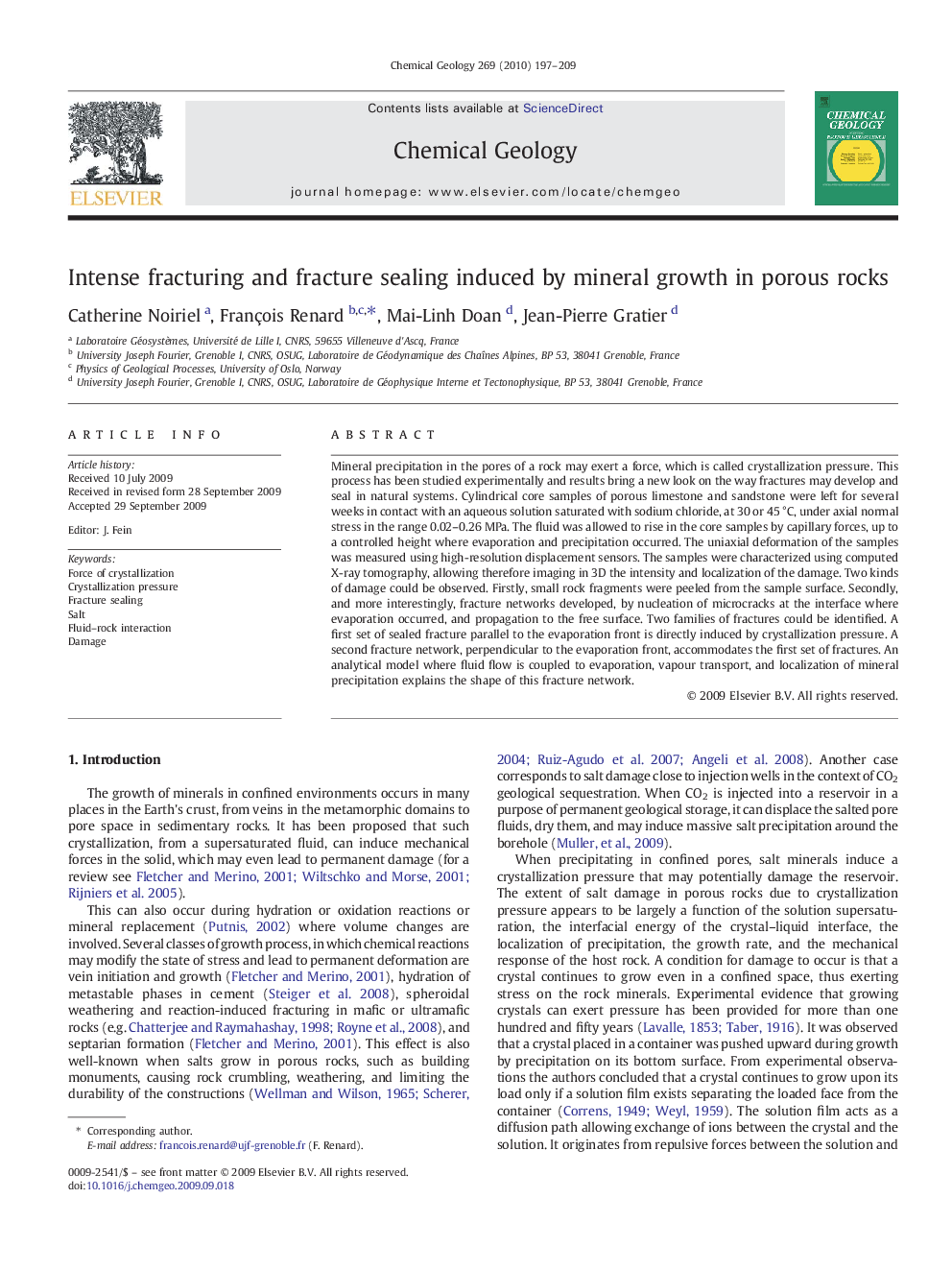| Article ID | Journal | Published Year | Pages | File Type |
|---|---|---|---|---|
| 4700165 | Chemical Geology | 2010 | 13 Pages |
Mineral precipitation in the pores of a rock may exert a force, which is called crystallization pressure. This process has been studied experimentally and results bring a new look on the way fractures may develop and seal in natural systems. Cylindrical core samples of porous limestone and sandstone were left for several weeks in contact with an aqueous solution saturated with sodium chloride, at 30 or 45 °C, under axial normal stress in the range 0.02–0.26 MPa. The fluid was allowed to rise in the core samples by capillary forces, up to a controlled height where evaporation and precipitation occurred. The uniaxial deformation of the samples was measured using high-resolution displacement sensors. The samples were characterized using computed X-ray tomography, allowing therefore imaging in 3D the intensity and localization of the damage. Two kinds of damage could be observed. Firstly, small rock fragments were peeled from the sample surface. Secondly, and more interestingly, fracture networks developed, by nucleation of microcracks at the interface where evaporation occurred, and propagation to the free surface. Two families of fractures could be identified. A first set of sealed fracture parallel to the evaporation front is directly induced by crystallization pressure. A second fracture network, perpendicular to the evaporation front, accommodates the first set of fractures. An analytical model where fluid flow is coupled to evaporation, vapour transport, and localization of mineral precipitation explains the shape of this fracture network.
